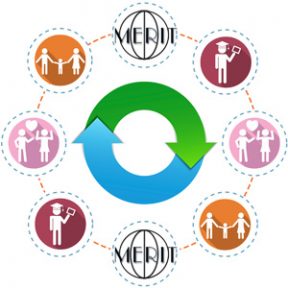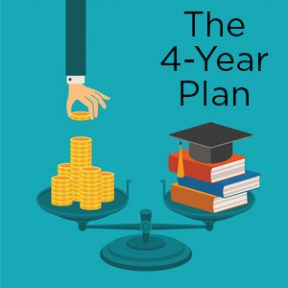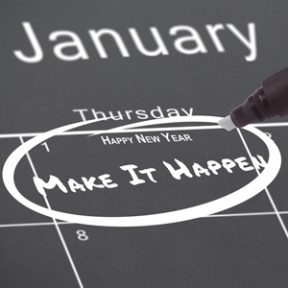 I traveled halfway across the world to introduce Merit Academy’s one-on-one classes to Chinese agents last week.
I traveled halfway across the world to introduce Merit Academy’s one-on-one classes to Chinese agents last week.
This new concept in educating foreign students so they actually learn to communicate in English, build strong academic skills to prepare them for the university, and to give them an individualized education was well received.
I gave the introductory presentation at the reception and met with agents the following day.
With 70+ students in high school classes in Beijing, they were thrilled to find this unique opportunity for their clients. I even met several agents from Mongolia who asked me to set up satellite schools in Ulaanbaatar and also in Beijing!
Who knew there would be such interest?
 I traveled halfway across the world to introduce Merit Academy’s one-on-one classes to Chinese agents last week.
I traveled halfway across the world to introduce Merit Academy’s one-on-one classes to Chinese agents last week.
This new concept in educating foreign students so they actually learn to communicate in English, build strong academic skills to prepare them for the university, and to give them an individualized education was well received.
I gave the introductory presentation at the reception and met with agents the following day.
With 70+ students in high school classes in Beijing, they were thrilled to find this unique opportunity for their clients. I even met several agents from Mongolia who asked me to set up satellite schools in Ulaanbaatar and also in Beijing!
Who knew there would be such interest?
 When my daughters were born, I vowed to educate them by creating a comprehensive K-12 curriculum, hiring the best teachers, and giving them unparalled experiences.
No, this wasn’t homeschooling – I never taught a class. I started a private school called Merit Academy in 1994. We changed our structure from small classes to one-on-one classes in 2000, and that’s when we saw students really thrive.
We’ve had hundreds of students and each one of them have gone off to do incredible things.
I’ve watched how the academic pendulum went from New Math to Whole Language to Common Core. I’ve observed (with frustration) the Department of Education’s many attempts at educating the whole child; that’s the main reason I’ve been in the business of education since 1979.
For me, the best part of this job is when students come back to meet with me to discuss a plan for THEIR CHILDREN! I’m thrilled to guide them as parents and honored that they value the unique benefits they received as students at Merit. I don’t think I’ll ever retire!
Besides, where will my future grandchildren be educated?
When my daughters were born, I vowed to educate them by creating a comprehensive K-12 curriculum, hiring the best teachers, and giving them unparalled experiences.
No, this wasn’t homeschooling – I never taught a class. I started a private school called Merit Academy in 1994. We changed our structure from small classes to one-on-one classes in 2000, and that’s when we saw students really thrive.
We’ve had hundreds of students and each one of them have gone off to do incredible things.
I’ve watched how the academic pendulum went from New Math to Whole Language to Common Core. I’ve observed (with frustration) the Department of Education’s many attempts at educating the whole child; that’s the main reason I’ve been in the business of education since 1979.
For me, the best part of this job is when students come back to meet with me to discuss a plan for THEIR CHILDREN! I’m thrilled to guide them as parents and honored that they value the unique benefits they received as students at Merit. I don’t think I’ll ever retire!
Besides, where will my future grandchildren be educated?
 Watching the Joy Luck Club with Merit students the other night was exceptionally insightful thanks to Angelique, a new international student from China. She translated some of the scenes that didn’t have a narration and she explained the dynamics of the Chinese culture.
Each of our students brought fascinating perspectives!
Amy was born in China, but adopted by a Santa Cruz couple when she was just one year old.
Ivon and Evelyn compared their Mexican ancestry with some of the Chinese traditions.
Tasha brought her All-American Girl experiences to the discussion table.
Watching excellent films like these introduces culture and history in a way that simply can’t be done in a classroom!
Watching the Joy Luck Club with Merit students the other night was exceptionally insightful thanks to Angelique, a new international student from China. She translated some of the scenes that didn’t have a narration and she explained the dynamics of the Chinese culture.
Each of our students brought fascinating perspectives!
Amy was born in China, but adopted by a Santa Cruz couple when she was just one year old.
Ivon and Evelyn compared their Mexican ancestry with some of the Chinese traditions.
Tasha brought her All-American Girl experiences to the discussion table.
Watching excellent films like these introduces culture and history in a way that simply can’t be done in a classroom!
 Most college kids scramble to find courses each term. I know; I work with many of them. They search the schedule of classes for interesting courses or get tips from friends about easy GEs (general education courses). When they finally get frustrated, or when their parents realize they’re throwing lots of money down a big black hole, one of them contacts me to help them figure out what they’re really doing in college and how to create a plan to get them to graduation.
Most college kids scramble to find courses each term. I know; I work with many of them. They search the schedule of classes for interesting courses or get tips from friends about easy GEs (general education courses). When they finally get frustrated, or when their parents realize they’re throwing lots of money down a big black hole, one of them contacts me to help them figure out what they’re really doing in college and how to create a plan to get them to graduation.
By laying out a 4-year plan – ideally before they head off to college – students get a better sense of their majors and what it takes to prepare for a real career. We layout lower division, and then upper division requirements for their major, and then add in GEs, electives, internships, study abroad and other opportunities to ensure that they are primed for the workforce upon graduation. The best part is that we read and discuss course descriptions so they really get a sense for what they’ll be learning. While we’re laying out their 4-year plans, they can make pretty good educated decisions about whether or not these plans work for them.
The good news — if they decide they don’t really like the major or career, they figured this out BEFORE they started taking courses in that major and wasted their parents’ precious college funds. Sometimes students get so excited while building their 4-year plans that they add a minor to enhance their college experience and give them more tools to nail that perfect job. Others merge 2 majors by double majoring.
But students who choose classes one term at a time miss out on these epiphanies. They often have regrets about classes they missed because they’re offered on even years or they’ve already satisfied that particular requirement. With short-sightedness, they won’t have time to add prerequisite classes that also satisfy GEs, which limits what they can take by way of interesting upper division courses. Sadly, these students don’t have the opportunities to take full advantage of their college experience.
So have your college-bound or college student lay out their 4-year plans now. Ask them to justify what they’re taking and why. And most importantly ask them to defend their 4-year plan — so they own it. This will ensure your best ROI (return on investment).
 Congratulations to students who just finished fall semester finals!
I’m not sure why schools don’t just give finals before the winter holidays because preparing for finals after coming back from a 2-week break is both stressful and daunting. Most semester breaks are only a few days off so make the most of them!
Refuel but stay on the same schedule!
This might sound counterintuitive but hear me out. When you head back to school in a few days, you want to hit the new semester running. So you don’t want to be exhausted as your body has to readjust – again – to getting up early for school.
Over the next 3 or 4 days, get up at the same time you do while school is in session, and go to bed at a reasonable time so you get your 8 or 9 hours of sleep each night. If you need to catch up on sleep, go to bed earlier and maybe sleep in for an hour at the most. That way, when school starts up, you’ll be ready and refueled!
Congratulations to students who just finished fall semester finals!
I’m not sure why schools don’t just give finals before the winter holidays because preparing for finals after coming back from a 2-week break is both stressful and daunting. Most semester breaks are only a few days off so make the most of them!
Refuel but stay on the same schedule!
This might sound counterintuitive but hear me out. When you head back to school in a few days, you want to hit the new semester running. So you don’t want to be exhausted as your body has to readjust – again – to getting up early for school.
Over the next 3 or 4 days, get up at the same time you do while school is in session, and go to bed at a reasonable time so you get your 8 or 9 hours of sleep each night. If you need to catch up on sleep, go to bed earlier and maybe sleep in for an hour at the most. That way, when school starts up, you’ll be ready and refueled!
 Ever notice the incredible price hikes for food, toiletries, and gifts at airports? With a little planning ahead, you could avoid wasting hundreds of dollars on things you have sitting in your medicine cabinet or dresser drawers.
Ever notice the incredible price hikes for food, toiletries, and gifts at airports? With a little planning ahead, you could avoid wasting hundreds of dollars on things you have sitting in your medicine cabinet or dresser drawers.
Here are 3 tips that are easy to do and can save you lots of money.
Tip One Create a general itinerary of events and things you plan to do. This can include business meetings, big adventures at amusement parks, or parties and reunions. Consider the time of your departure and pack a lunch or dinner to really save on meals before you leave your home town! Even though you know what you’re planning to do in your head, just writing it down is the first step in making sure you’re covered for your trip. Tip Two Create the following lists of things you’ll need for each of these events:- What to wear
- What to bring, and
- What to do before you leave for the trip.
This is where you save big bucks by not having to buy jewelry or a fancy clothes for that reunion/soiree/murder mystery party or exercise clothes that are sitting in the dryer.
Remember to include chargers for your phones and computers, printed boarding passes, and oh yeah, your passport and/or visa! This will also remind you to purchase train tickets before you arrive in a foreign country — yup, it’s much easier to take care of this kind of thing ahead of time IN ENGLISH, rather than in another language at the ticket counter when you’re already running late!
Tip Three Open your suitcase and carry-on bag and place it in your bedroom. Start packing a week ahead of time and throw things in from your lists above. You’ll be surprised how you’ll be reminded of daily things like meds, dental gear, and toiletries just because you’ll see that open suitcase. You might even begin to over pack during the week, but it’s much easier to have MORE and discard than it is to not have enough and be forced to buy things at your destination. Bonus Tip I have a checklist that I give to my family that they keep in their suitcases. This way, when they open up their suitcases to pack, whether it’s an hour before flight time or a week ahead of time, they can check off what they’ve packed and they’ll have the heads up they need for just about everything else. I’ve added tasks like pet sitter, sports equipment lists, baby supplies, photography equipment, and a detailed toiletry list. With these tips, you won’t spend a dime on overpriced goods at the airport or at your destination. That gives you more money to buy fun things, and less stress so you can enjoy yourself even more! All of the recent requirement changes for the UC’s can be confusing.
To help you figure it all out, I’ve laid out exactly what’s needed for freshmen and transfer applicants below.
YES:
1. Freshmen must send SAT, ACT, and/or TOEFL scores to one UC
2. All students must mail UCs about any changes (senior classes, grades below C, or changing schools)
3. Transfer students need to log in to their applications and update fall term grades and planned spring courses by Jan 31st on the Transfer Application Update
4. All students seeking financial aid or scholarships should complete the FAFSA before March 2nd
NO:
1. Neither freshmen nor transfer students need to send fall transcripts now unless specifically asked to do so
2. Don’t call the admissions offices to inquire about your application status
3. Don’t send resumes, portfolios, DVDs, or any items to the admissions office
The waiting game can be stressful for students and parents. Check your email inbox frequently to see if anything is missing from your application packages, and send whatever they request ASAP.
Good luck!
All of the recent requirement changes for the UC’s can be confusing.
To help you figure it all out, I’ve laid out exactly what’s needed for freshmen and transfer applicants below.
YES:
1. Freshmen must send SAT, ACT, and/or TOEFL scores to one UC
2. All students must mail UCs about any changes (senior classes, grades below C, or changing schools)
3. Transfer students need to log in to their applications and update fall term grades and planned spring courses by Jan 31st on the Transfer Application Update
4. All students seeking financial aid or scholarships should complete the FAFSA before March 2nd
NO:
1. Neither freshmen nor transfer students need to send fall transcripts now unless specifically asked to do so
2. Don’t call the admissions offices to inquire about your application status
3. Don’t send resumes, portfolios, DVDs, or any items to the admissions office
The waiting game can be stressful for students and parents. Check your email inbox frequently to see if anything is missing from your application packages, and send whatever they request ASAP.
Good luck!
 Guest Blogger Mary Flodin on Pesticide Exposure in the Schools
Guest Blogger Mary Flodin on Pesticide Exposure in the Schools
Autism spectrum disorders, ADHD, and other neurobehavioral challenges are on the rise. As a teacher in Central California public schools over the past thirty years, I’ve witnessed an alarming increase in learning and social/emotional disabilities. This epidemic of learning and behavioral challenges is not limited to any one socio-economic or cultural class. Affluent and well-educated parents with access to excellent pre-natal care are being hit as hard as the poor.
What’s going on? There are many theories: vaccinations, GMO’s and other modifications to our food, exposure to electronic devices and to a wide variety of environmental pollutants . . . As is the case with most of our contemporary maladies, it’s difficult to identify any single “smoking gun” responsible for causing this widespread outbreak of neurological harm. However in California, one factor that researchers have now linked to the rise in childhood neurological disorders is pesticides.
Two studies – the CHAMACOS Study by UC Berkeley researchers and the MIND Institute study out of UC Davis – support a connection between pesticide exposure and neurobehavioral damage to the young. More on these studies can be found in the California Health Report article Dangerous Drift by Lily Dayton.
I first became aware of the problem of pesticide drift into the schools in the 1980’s, when I was teaching in a Watsonville elementary school surrounded by strawberry fields. At that time, my colleagues and I were passionately focused on providing our students with an excellent learning experience. We paid little attention to what was going on in the strawberry fields on the other side of the chain link fence. But when we realized that the incidence of cancer, asthma, developmental delays, and behavioral disorders at our school was abnormally high, we started asking questions. It soon became obvious that the pesticides being used on the other side of the fence were making people sick.
When we obtained copies of the pesticide use permits for the strawberry fields surrounding our school, we discovered that a whole suite of deadly poisons, many of them developed for chemical warfare, were drifting into our classrooms. At that point, I joined with other teachers, parents, and community members to found Farm Without Harm. The organization’s mission was to educate people about the dangers of pesticide exposure, to transform public policy, and to help facilitate the transition to sustainable agricultural practices.
Unfortunately, over the past decade, use of soil fumigants overall has actually increased 20 percent. Today, Californians living in agricultural regions have a 69 times higher risk of poisoning from pesticide drift than residents of other regions.
Although the pesticide of greatest concern in the 1990’s, Methyl Bromide, is finally beginning to be phased out, Chlorpyrifos (one of the Organophosphate class of pesticides that was the subject of the CHAMACOS study), Glyphosate (Round Up), Chloropicrin (tear gas), and the carcinogenic 1,3-D/Telone – all pesticides of great concern – are in widespread use today in Central California. There are currently no standardized state-wide regulations about how close to schools, hospitals, shopping centers, and residential areas these acutely toxic chemicals, prone to drift, can be used.
Over the past year, the Safe Strawberry Working Group, a Monterey Bay area subcommittee of Californians for Pesticide Reform and Pesticide Action Network, has been meeting with the county agricultural commissioners, boards of supervisors, and state officials to promote new state policies restricting pesticide use near schools, including no-spray “buffer zones”. We’ve also supported the proposed ban on brain-harming, lung-damaging Chlorpyrifos and restrictions on the use of the carcinogenic endocrine disruptor Glyphosate (Roundup).
The Monterey Bay community continues to be at the forefront of pesticide reform activism in California, as it has been for half a century. Last year in the Monterey Bay area, thousands signed petitions and letters to pesticide regulators; hundreds attended public events, meetings, and actions; dozens spoke at news conferences and public meetings; dozens more wrote to or were quoted in news media; and yet more dozens met with local and state officials. We are now on the brink of a truly hopeful moment with never-before opportunities to reduce the threats of hazardous pesticides. This year, we’ll need to do even more.
Please join us in planning and carrying out this year’s campaigns to improve the health of our children and our community through reducing the threats of hazardous pesticides. If this issue is of concern to you and you’d like to make a difference, you are invited to attend either or both of the following monthly meetings:
Safe Strawberry Monterey Bay Working Group—Salinas Branch read more
 This idea started when I realized I had a drawer full of old t-shirts that I just couldn’t throw out. This may sound like the beginnings of a hoarder’s nightmare but each of these t-shirts brought back nostalgic memories.
When Nicole discovered that I had this giant drawer filled with t-shirts I couldn’t throw out, she gave me a bag of her t-shirts, too. Hmm, runs in the family.
I thought about cutting out square patches from each t-shirt and making a quilt, but my walls are filled with quilts from Merit Academy’s classes. So instead, I created t-shirt art all of Nicole’s favorite t-shirts and framed it. Her collection includes t-shirts from her Dollie days at Stanford as well as Jam Pac’d, Decadance, the Band and other college memories. It also has Merit Academy, No Limits, and Dancenter, and her travels to the rainforest in Costa Rica and the Galapagos Islands. She even had t-shirts from her first modeling gig with Jeff Sumida.
How do you make t-shirt art?
Let me tell you, it was really easy, and fun to do!
I bought an inexpensive framed chalkboard at Target, cut out the logos and artwork on the t-shirts, heated up my glue gun, and rolled quilt batting to add dimension.
Before I glued each piece to the chalkboard, Nicole and I arranged and rearranged each piece. That was my favorite part! She told me stories behind each t-shirt that I hadn’t heard before.
She’s taking her t-shirt art home and hanging it on her living room wall. I’m sure it’ll be a great conversation starter!
This idea started when I realized I had a drawer full of old t-shirts that I just couldn’t throw out. This may sound like the beginnings of a hoarder’s nightmare but each of these t-shirts brought back nostalgic memories.
When Nicole discovered that I had this giant drawer filled with t-shirts I couldn’t throw out, she gave me a bag of her t-shirts, too. Hmm, runs in the family.
I thought about cutting out square patches from each t-shirt and making a quilt, but my walls are filled with quilts from Merit Academy’s classes. So instead, I created t-shirt art all of Nicole’s favorite t-shirts and framed it. Her collection includes t-shirts from her Dollie days at Stanford as well as Jam Pac’d, Decadance, the Band and other college memories. It also has Merit Academy, No Limits, and Dancenter, and her travels to the rainforest in Costa Rica and the Galapagos Islands. She even had t-shirts from her first modeling gig with Jeff Sumida.
How do you make t-shirt art?
Let me tell you, it was really easy, and fun to do!
I bought an inexpensive framed chalkboard at Target, cut out the logos and artwork on the t-shirts, heated up my glue gun, and rolled quilt batting to add dimension.
Before I glued each piece to the chalkboard, Nicole and I arranged and rearranged each piece. That was my favorite part! She told me stories behind each t-shirt that I hadn’t heard before.
She’s taking her t-shirt art home and hanging it on her living room wall. I’m sure it’ll be a great conversation starter!
 Here are 3 easy steps to organize and plot out steps to reaching your goals!
Here are 3 easy steps to organize and plot out steps to reaching your goals!
New Year’s Resolution? Yah right. For most people, it’s a pipe dream. But New Year’s Resolutions usually don’t happen because everyone set lofty goals WITHOUT A PLAN! So here are 3 easy steps to make your New Year’s Resolutions part of your life. Not just temporarily, but until you actually reach your goals!
Step One: Write it down
My good friend Tim Niemier once told me that you need to write down your goals in order to make them come true. At first, I thought he was a little wacky, but then again, he had a goal to make sit-on-top kayaks and sold Ocean Kayak for a small fortune! Hmmm. But I’m actually advocating that you write down your goal in your planner. In other words, pick the date you would like to actualize your dream or goal and write it down on that date. That’s right, just write it down.
Step Two: Block off time to do each phase
After you write down your goal on an actual date, then make a list of all of the steps you need to take to reach that goal. For instance, if you want to build a greenhouse, then make a list of the general steps you need to take to complete it. The list might look something like this: (1) design greenhouse; (2) layout measurements; (3) organize materials list; (4) create a budget; (5) order materials; (6) lay foundation; (7) build framework; (8) add windows and glass; (9) install doors; and (10) install shelves. Then WRITE DOWN WHEN YOU WILL DO EACH OF THESE PHASES. Take into consideration your job, family, and other commitments but block off time to get it done.
Step Three: Reward yourself along the way
As you complete each phase, highlight it in your planner. That’ll give you a feeling of accomplishment. If you miss one step, then move it to another time that works for you. Don’t beat yourself up about it. Life happens and you need to be flexible. As you consider your tasks for each day, you may need to say no to other activities in order to stick to your goal. That’s why it’s nice to have it written down in your planner.
So get the new planner for next year and get started now! It’s simple. Just WRITE IT DOWN. Write your goal and each step in your planner; you’ll be surprised by how easy it is to reach it by your deadline! Let me know how this works for you!










